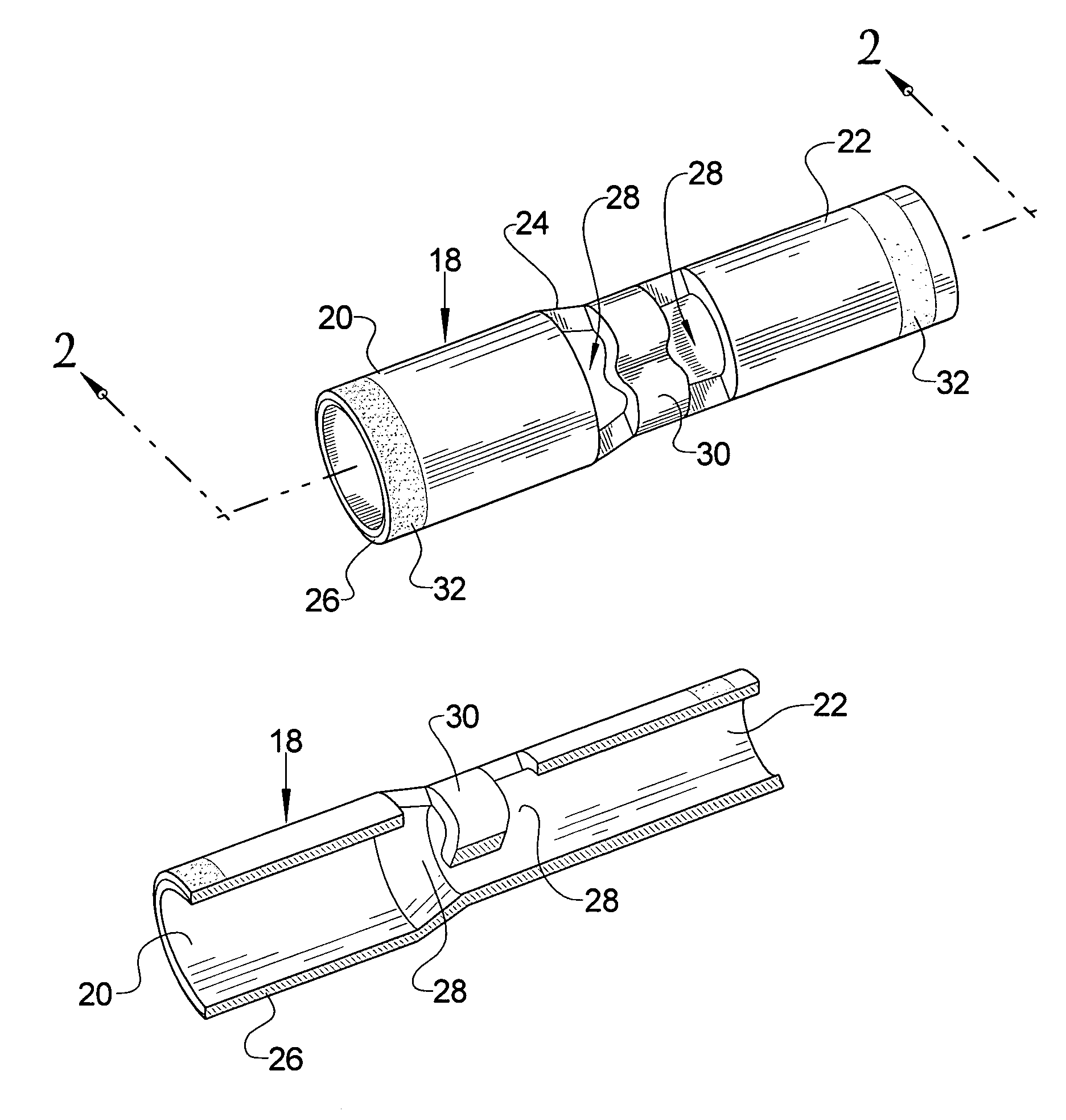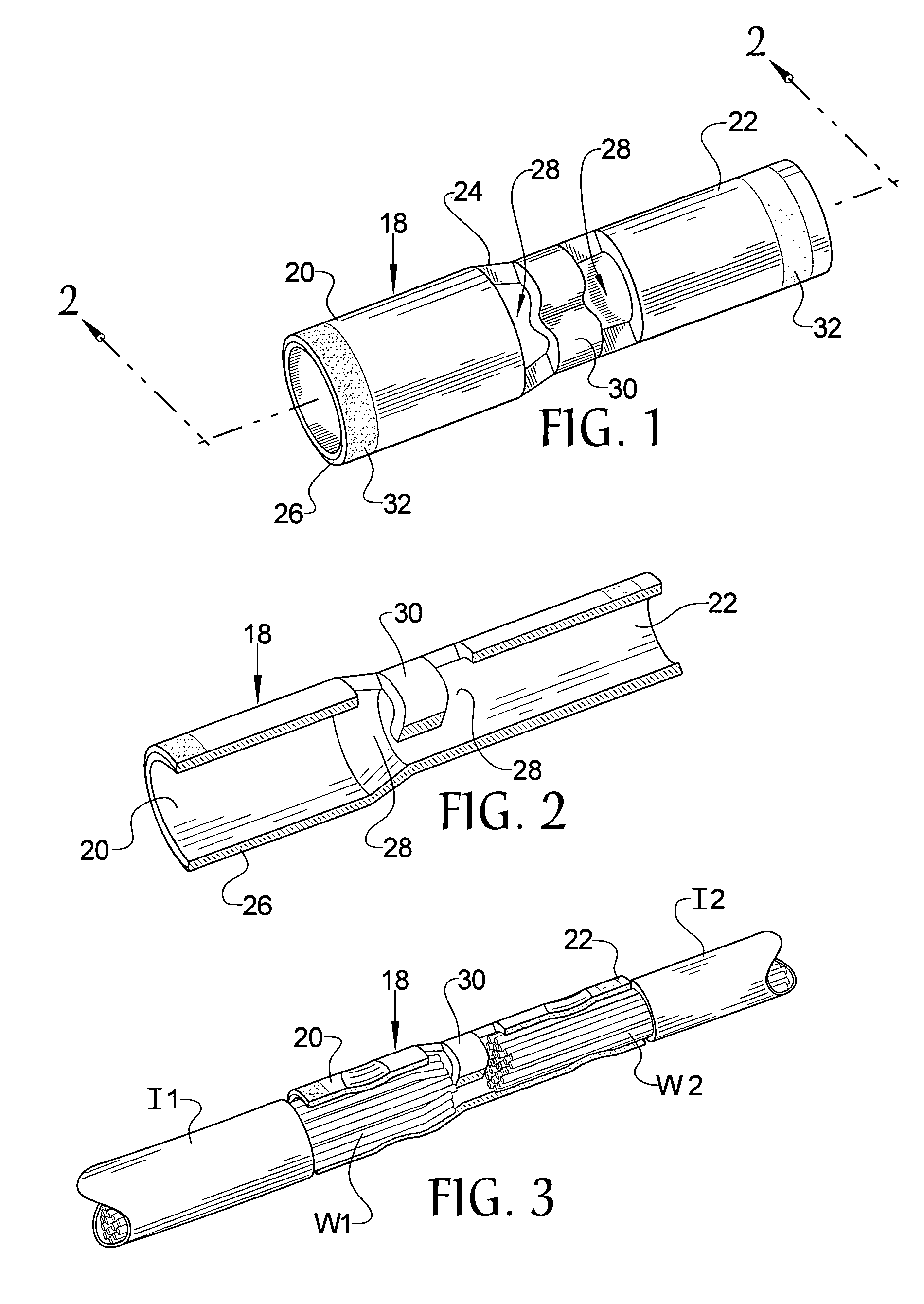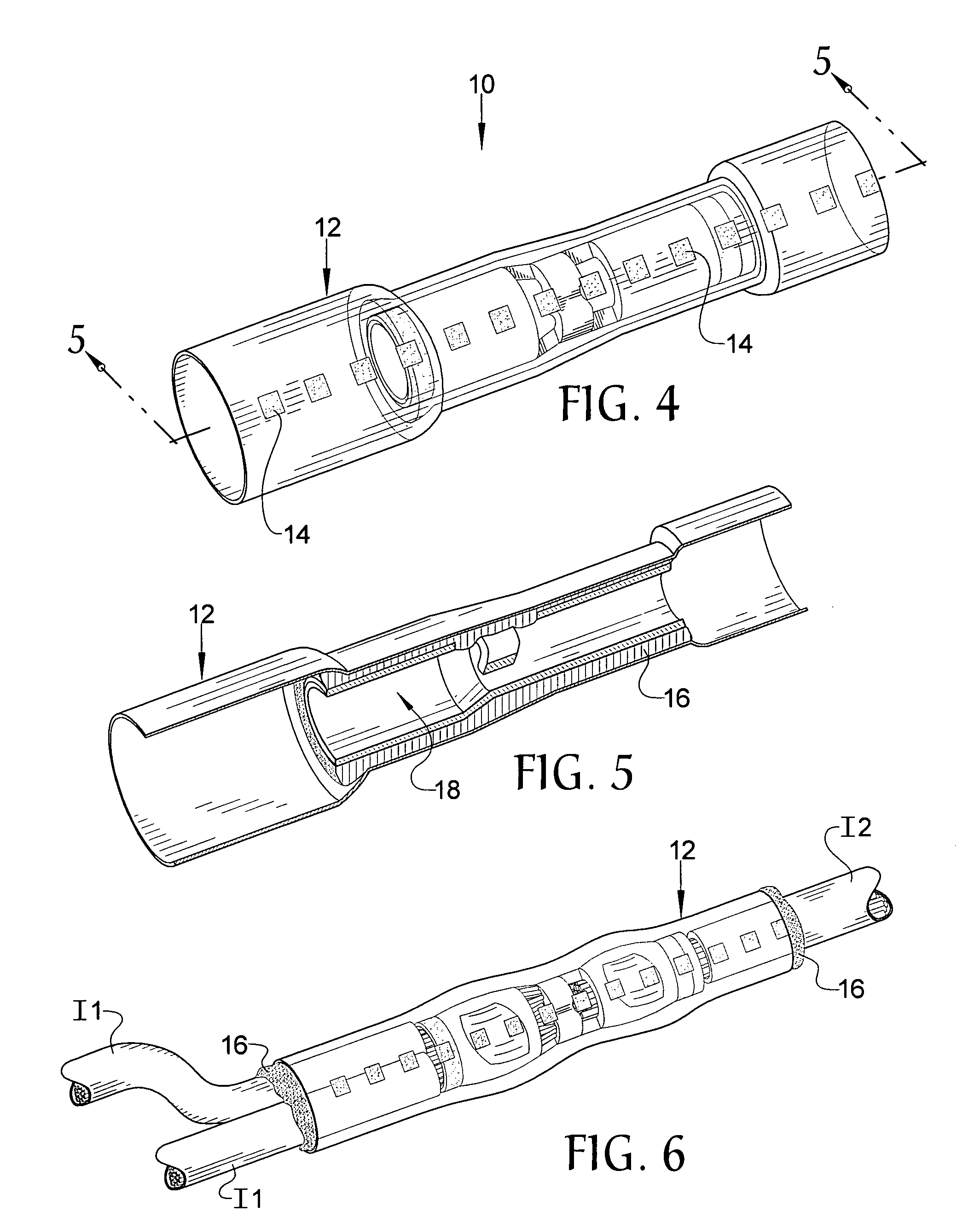Step-down in-line butt connector
- Summary
- Abstract
- Description
- Claims
- Application Information
AI Technical Summary
Benefits of technology
Problems solved by technology
Method used
Image
Examples
Embodiment Construction
[0017]Referring now to the drawings, it is seen that the step-down in-line butt connector of the present invention, generally denoted by reference numeral 10, is comprised of a heat shrinkable hollow sleeve 12. The hollow sleeve is at least partially translucent for viewing thereinto and may be tinted, the specific tint corresponding to a specific size to be used for a specific size of body member discussed below, and may have certain identification indicia 14 printed thereon to allow a user to visually determine the size of the hollow sleeve 12. The hollow sleeve 12 may be made from a heat shrinkable material, such as polyolefin, and, advantageously, has a heat shrink ratio at least about 4 to 1, although ratios that are less may also be used. As seen, the medial portion of the hollow sleeve 12 is initially at least partially heat shrunk. An adhesive element 16 is located within the hollow sleeve 12, the adhesive element 16 being co-extruded with the hollow sleeve 12, and the adhes...
PUM
 Login to View More
Login to View More Abstract
Description
Claims
Application Information
 Login to View More
Login to View More - R&D
- Intellectual Property
- Life Sciences
- Materials
- Tech Scout
- Unparalleled Data Quality
- Higher Quality Content
- 60% Fewer Hallucinations
Browse by: Latest US Patents, China's latest patents, Technical Efficacy Thesaurus, Application Domain, Technology Topic, Popular Technical Reports.
© 2025 PatSnap. All rights reserved.Legal|Privacy policy|Modern Slavery Act Transparency Statement|Sitemap|About US| Contact US: help@patsnap.com



